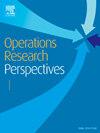不确定性下的智能家居经济运行:使用高斯和基于kde的数据比较蒙特卡罗和随机优化
IF 3.7
4区 管理学
Q2 OPERATIONS RESEARCH & MANAGEMENT SCIENCE
引用次数: 0
摘要
本文研究了一个配备光伏和电池的建筑规模能源枢纽的最优日前运行。电力需求和光伏可用性是不确定的,并以两种方式表示:(i)细尾正态分布和(ii)核密度估计(KDE)拟合经验CityLearn数据。对于每个表示,我们评估(a)确定性蒙特卡罗分析,其中枢纽分别针对1,000个日常场景进行优化,以及(b)两阶段随机优化,该优化在0-11小时内固定一组决策,并在观察到条件后适应12-23小时。高斯输入产生聚类成本(平均值= 51.6美元,σ= 0.2美元),99%的CVaR低于52美元,这表明风险可以忽略不计。KDE输入将蒙特卡罗平均值提高到80.6美元,并将99% CVaR提高到114美元,暴露了重尾风险。在随机模型中,相同的第一阶段政策在高斯数据下的成本为79.0美元,而在KDE数据下仅为71.3美元,因为索赔权利用阳光明媚的情景,将95%的CVaR从106.4美元削减到93.5美元。因此,高斯假设模糊了真实的运营成本和财务风险,而在随机优化中结合经验推导的KDE不确定性既降低了平均成本,又为极端成本结果提供了更强的保护。本文章由计算机程序翻译,如有差异,请以英文原文为准。
Smart home economic operation under uncertainty: comparing monte carlo and stochastic optimization using gaussian and KDE-based data
This paper investigates optimal day-ahead operation of a building-scale energy hub equipped with photovoltaics and a battery. Electricity demand and PV availability are uncertain and are represented in two ways: (i) thin-tailed normal distributions and (ii) kernel density estimation (KDE) fitted to empirical CityLearn data. For each representation we evaluate (a) deterministic Monte Carlo analysis, where the hub is optimised separately for 1 000 daily scenarios, and (b) a two-stage stochastic optimisation that fixes one set of decisions for hours 0–11 and adapts for hours 12–23 after conditions are observed. Gaussian inputs yield clustered costs (mean= $51.6, σ= $0.2) and a 99 % CVaR below $52, suggesting negligible risk. KDE inputs raise the Monte Carlo mean to $80.6 and lift the 99 % CVaR to $114, exposing heavy-tailed risk. Within the stochastic model the identical first-stage policy costs $79.0 with Gaussian data but only $71.3 with KDE, as recourse exploits sunny scenarios and trims the 95 % CVaR from $106.4 to $93.5. Consequently, Gaussian assumptions obscure true operating costs and financial exposure, whereas incorporating empirically derived KDE uncertainty within stochastic optimisation both lowers the average cost and provides stronger protection against extreme cost outcomes.
求助全文
通过发布文献求助,成功后即可免费获取论文全文。
去求助
来源期刊

Operations Research Perspectives
Mathematics-Statistics and Probability
CiteScore
6.40
自引率
0.00%
发文量
36
审稿时长
27 days
 求助内容:
求助内容: 应助结果提醒方式:
应助结果提醒方式:


